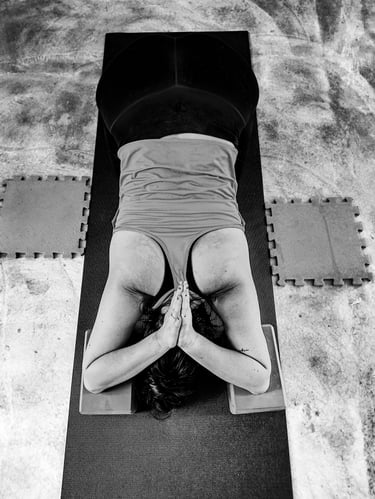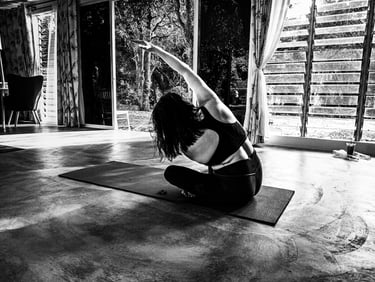Breath & Back Pain
Pulmonary fibrosis can have a wide range of causes linked to respiratory health, environmental factors, and systemic conditions. Stress also plays a significant role, often exacerbating symptoms or underlying mechanisms that contribute to breathing difficulties. While it is rarely a root cause, it can be a significant amplifier of symptoms. For a light sleeper with shallow breathing during sleep, this could be a significant link in the chain of causes contributing to pulmonary fibrosis or aggravate its progression. Addressing sleep quality and respiration mechanics is a proactive approach that can mitigate further damage and improve overall respiratory health.
Back pain can be linked to the complex mechanics of breathing.
The diaphragm (your main breathing muscle) works with your stomach, back, and pelvic muscles to keep your spine stable. When the diaphragm isn’t working well, your back may have to take on extra work - something few realise can contribute to back pain.
This becomes more challenging with pulmonary fibrosis (scarring of the lungs) ; the stiffened lungs require more effort from the diaphragm to pull in air. This extra strain can lead to muscle fatigue, tightness, and pain in the middle and lower back. This often leads to a forward-leaning posture to compensate for breathing difficulties.
Combining proper breathing techniques with core and back-strengthening exercises may provide significant relief and improved quality of life (but can’t reverse scarring)
Dirga Pranayama focuses on breathing deeply into three parts of the lungs: the belly (diaphragm), ribs (intercostals), and chest (upper lungs). This technique encourages full lung expansion, enhances diaphragm engagement, and improves oxygen exchange—making it highly beneficial for people with pulmonary fibrosis. It is also calming, helping to manage anxiety and breathlessness associated with lung conditions.
Nadi Shodhana promotes calm, balanced breathing and improves respiratory efficiency. It helps train the nervous system for better breath control and can reduce tension in the diaphragm and accessory breathing muscles. This practice also supports parasympathetic activation, which aids in reducing stress-induced breathlessness.




Poses and Exercises for Back Pain Relief
Seated Side Bends
Modified Plank (Side Stretch Version)
Thread the Needle (All variants)
Bridge Pose
All variations of seated side bends and thread the needle provide valuable myofascial release, spinal mobility, and diaphragmatic stretch that benefit both breathing mechanics and back health. Bridge pose is particularly effective for strengthening the back, engaging the core, and gently stretching the chest and diaphragm.
These poses can be tailored to different levels of flexibility and focus areas, making them versatile and highly effective for managing diaphragm tension, improving posture, and alleviating back pain associated with shallow breathing or pulmonary fibrosis.
Other poses can include :
Child Pose
Extended Puppy
Cobra
Upward Dog
Cat-Cow Pose
Sphinx Pose
Reclined Bound Angle Pose
Pawanmuktasana (Wind-Relieving Pose):
Camel Pose (Ustrasana):
Fish Pose
These poses can be described as variations of chest-opening poses because they share the common goal of enhancing thoracic expansion, diaphragm mobility, and spinal flexibility, all of which are crucial for breathing efficiency and postural alignment.
Each pose offers a unique angle or intensity to stretch the chest, intercostal muscles, and shoulders, making them adaptable for various needs and levels of practice. In the context of managing respiratory-related back pain or pulmonary conditions, they complement core engagement and breathing techniques beautifully.
More Insights
